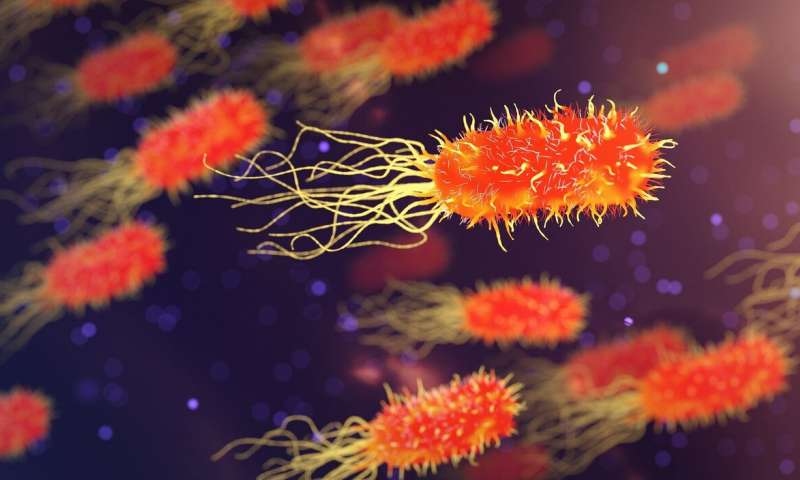|
Gram-negative
bacteria
|
Pathologies:
Clinical feature
|
|
Neisseria
gonorrhea
|
- tract infections for both male (urethra) and female (vagina
and Genitourinary endocervix), associated with purulent urethral
discharge and painful urination. The infection may progress to the
uterus, causing salpingitis (inflammation of the fallopian tubes),
pelvic inflammatory disease (PID), and fibrosis.
- Infertility may occur for women with salpingitis.
- Renal infection for men associated with constipation,
painful defecation and purulent discharge.
- Pharyngitis if purulent pharyngeal exudation occurs.
- Ophthalmia neonatorum in newborns acquired during birth
through the cervix.
- Disseminated infection associated with fever; painful,
purulent arthritis; and small, single, scattered pustules on the skin,
with an erythematous (red) base due to dilation or congestion of
capillaries.
- Necrosis may develop.
|
|
Neisseria
meningitides
|
- Meningitis can rapidly spread causing meningococcemia if
the bacteria invades the bloodstream, associated with a high fever. It
can also spread and invade the brain barrier causing purulent meningitis
with fever and severe headaches, joint aches and a petechial and/or
purpuric rash.
- Septicemia occurs within the first 12 hours of infection
which can progress to fulminant septicemia and shock especially in
children known as Waterhouse-Friderichsen syndrome)
|
|
Escherichia
coli
|
- Intestinal diseases include; enterotoxigenic (ETEC), enteropathogenic (EPEC),
enterohemorrhagic (EHEC), enteroinvasive (EIEC), and enteroaggregative
(EAEC). They are all associate with diarrhea (watery or/and bloody).
- Extraintestinal diseases such as Urinary tract infection including cystitis and
pyelonephritis, neonatal meningitis and nosocomial-acquired infections
such as sepsis/bacteremia, endotoxic shock, and pneumonia.
|
|
Salmonella spp
|
- Enteric and Typhoid fever characterized by fever, abdominal
pain, and severe symptoms include chills, sweats, headache, anorexia,
weakness, sore throat, cough, myalgia, and either diarrhea or
constipation.
- Gastroenteritis (salmonellosis) characterized
by nausea, vomiting, and non-bloody diarrhea.
- Bacteremia associated with abdominal infections (of the
hepatobiliary tract and spleen); osteomyelitis; septic arthritis
|
|
Campylobacter
jejuni
|
- It causes intestinal and extraintestinal disease with
systemic associated with fever, headache, myalgia, and abdominal
cramping and diarrhea, which may or may not be bloody.
- It commonly causes traveler’s diarrhea and
pseudoappendicitis with symptoms simulating appendicitis without
inflammation of the appendix).
- Bacteremia (often transient) may occur, most often in
infants and older adults.
|
|
Salmonella
dysenterae
|
- Shigellosis (bacillary dysentery) characterized by diarrhea
with blood, mucus in stool, and painful abdominal cramping.
|
|
Vibrio
cholera
|
- Cholera associated with profuse watery diarrhea massive
loss of fluid and electrolytes from the body
|
|
Helicobacter
pylori
|
- Acute gastritis with diarrhea
- Superficial gastritis associated with epigastric discomfort
causing both duodenal ulcers and gastric ulcers.
- Persistent ulceration may lead to mucosa
associated-lymphoid tumors.
|
|
Klebsiella
pneumonia
|
- It causes UTI and nosocomial acquired bacteremia.
|
|
Pseudomonas
aeruginosa
|
- It causes opportunistic nosocomial infections of wounded
patients from surgeries, invading the body through catheters and
respirators.
- Keratitis and endophthalmitis after an injury that formed a
wound, associated with necrotic otitis.
- Skin wound infections.
- Respiratory tract infections characterized by pneumonia
symptoms.
- Gastrointestinal infections with diarrhea.
- Necrotic enterocolitis in infants.
- Systemic infections associated with septicemia, pneumonia,
bone and joint infections, Infection of the central nervous system (CNS)
and soft tissue infections in hospitalized patients.
|








